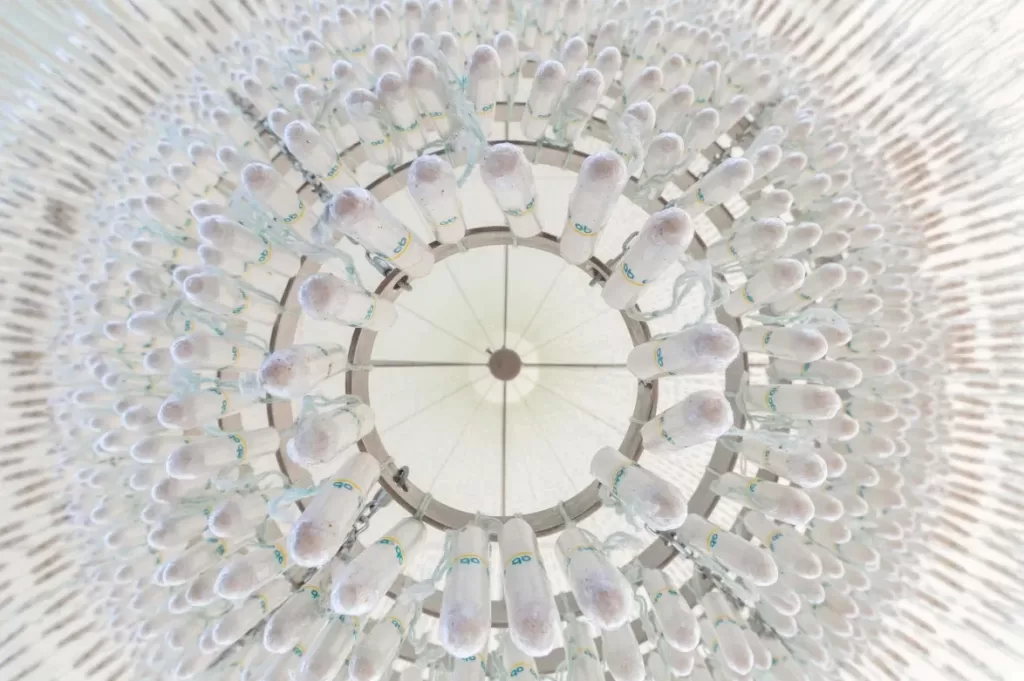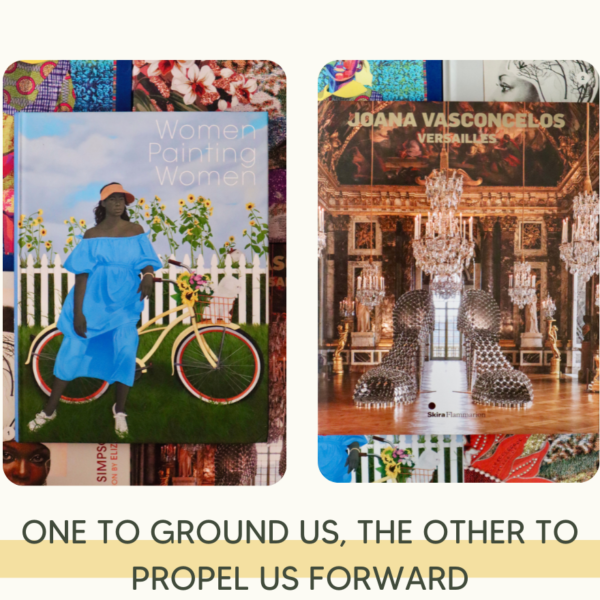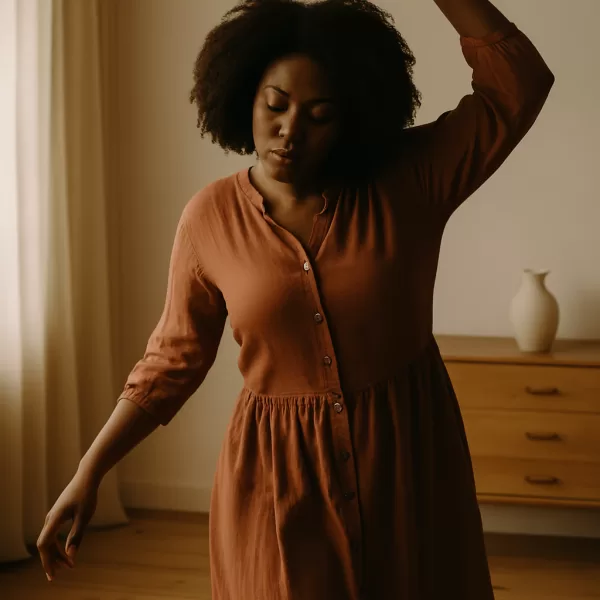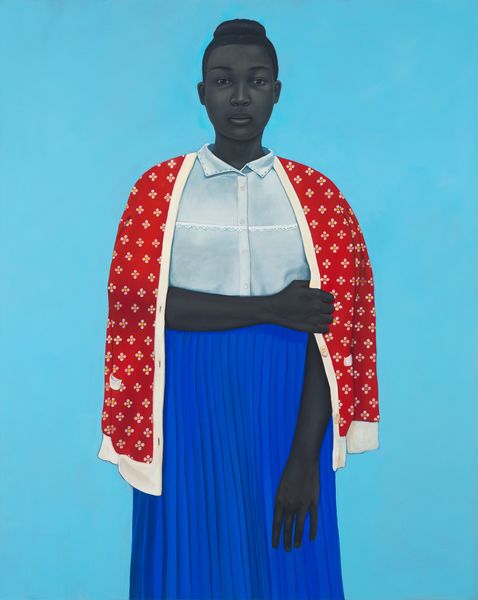Have you ever walked into a space and felt art completely reshape how you see it? That’s exactly the magic Joana Vasconcelos brought to the Palace of Versailles. The Portuguese artist transformed this iconic symbol of opulence with bold, whimsical sculptures that feel like modern conversations with history.
The Bride (A Noiva): A Provocative Reinterpretation of Luxury
Take The Bride (A Noiva), for example a shimmering chandelier made entirely of tampons. It’s striking, witty, and unforgettably provocative. When I first saw it, I didn’t just stop I stared. It redefined for me what contemporary art could be: humorous, audacious, and full of meaning.
This piece challenged my preconceptions of luxury. We often associate opulence with diamonds, pearls, and crystal chandeliers, but Vasconcelos flips this idea on its head, making a statement about femininity, feminism, and redefinition. The juxtaposition of such an everyday, feminine item tampons against the grandeur of Versailles was nothing short of revolutionary. It’s art that dares to make you think, laugh, and reconsider everything you thought you knew about beauty and art.

Marilyn: Reimagining Iconic Luxury
Vasconcelos’ work doesn’t just decorate; it disrupts, invites, and makes you think. Pieces like Marilyn towering high heels crafted from stainless steel pots and lids don’t just play with scale but with the grandeur of Versailles itself. It’s as if she’s reminding us that luxury isn’t only gilded mirrors and crystal chandeliers; it can be found in humor, in reinterpretation, in rebellion.
The audacity of this piece challenges the established ideas of iconic luxury and femininity. In a space known for its grand traditions, Marilyn’s high heels made from cooking pots and lids bring a playful, yet poignant commentary on the expectation of womanhood, power, and elegance. Vasconcelos reimagines the feminine form as empowered, humorous, and strong, creating an icon from unexpected materials.

The Bridge Between Eras: Modern Materials in a Historic Setting
What I love most about her exhibit is how it feels like a bridge between eras. By placing modern materials in such a historic setting, Vasconcelos doesn’t just honor tradition; she challenges it. Her art makes you stop, laugh, and question all at the same time.
There’s something magical about how Vasconcelos’ works exist so seamlessly within the baroque splendor of Versailles. Her art feels like a conversation between two worlds history and modernity where the past meets the present, and the boundaries between them are blurred. This was not just an exhibit; it was an experience that made me rethink how we engage with both art and history.

Let’s Chat:
What’s a piece of art that’s challenged the way you see the world? How does it make you think differently about beauty, history, or the materials we use in art? Share your thoughts in the comments I’d love to hear your stories.
Personal Reflection:
When I first saw The Bride, it was like a switch flipped. I’d always thought of art as either beautiful or thought-provoking, but rarely both. Yet here was this piece delicate and dazzling, yet made from the most unexpected material. It was funny, bold, and deeply feminist all at once. If you haven’t discovered our other Coffee Table Book Club Book of the month take a look here.
But it wasn’t just The Bride that stayed with me it was how Vasconcelos transformed Versailles itself. By weaving her contemporary works into its baroque splendor, she created a space where history and modernity could coexist, where art could rebel against the very walls it adorned.
It’s a reminder to me that art is at its most powerful when it challenges, surprises, and dares to stand out. And Vasconcelos’ work? It doesn’t just stand out it redefines the room entirely.
You don’t need a plan just curiosity. The Art of Wonder is a self-paced 4-week course to help you slow down, notice more, and reawaken your creative gaze. HERE!





[…] Hint: You don’t need to explain it to anyone. If it speaks to you, that’s enough. Like a book we love Joana Vasconcelos: Versailles read about it here. […]